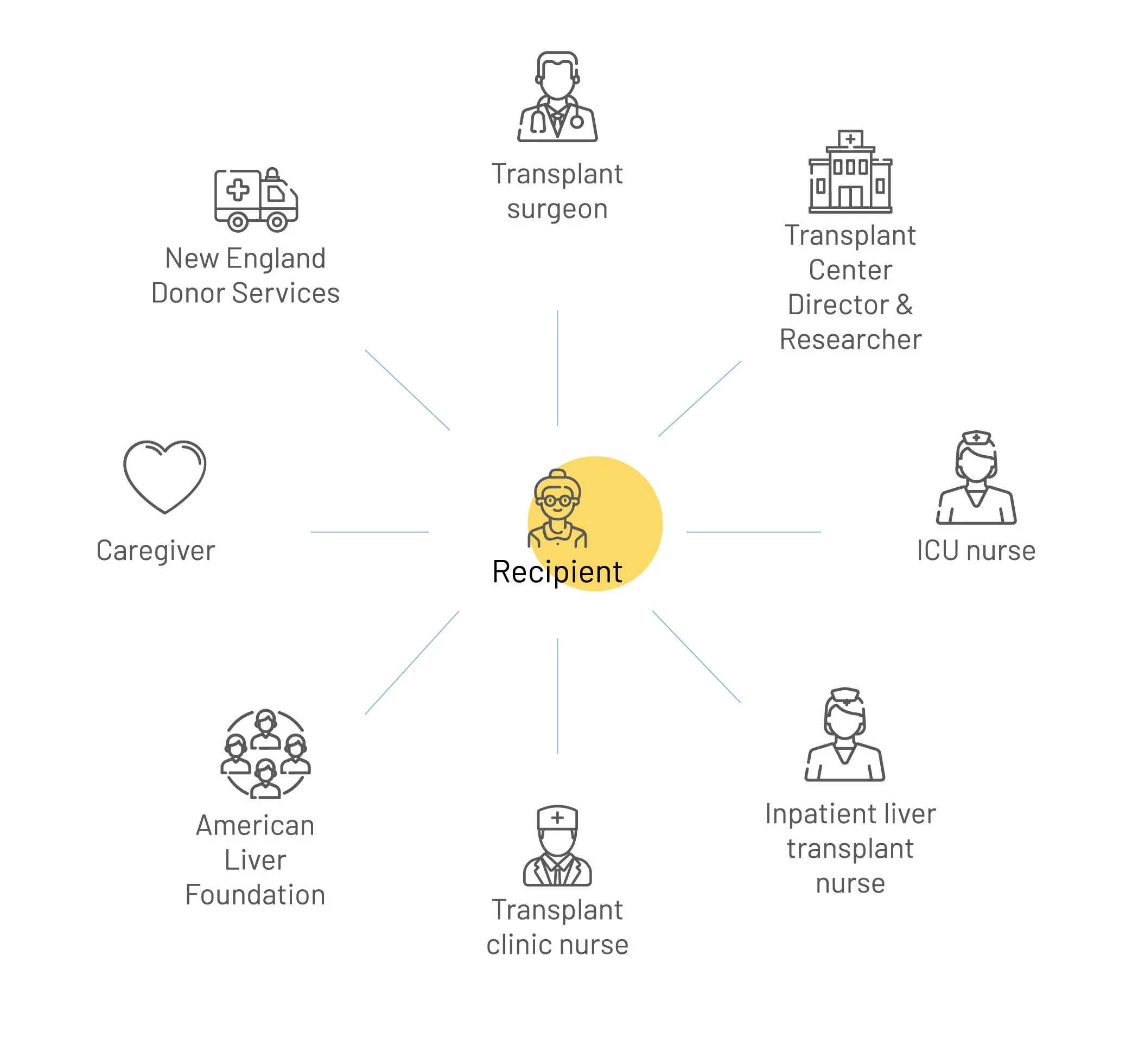
Live Fully
Live Fully imagines a healthcare service to improve quality of life & reduce hospital readmissions for transplant recipients.
The brief:
10-week design project in the Spring 2020 Master in Design Engineering Collaborative Studio
The team:
Codesigned by Hyemin Bae & Anirban Ghosh
My role:
Project management, business design, visual communication design
PROBLEM
Liver transplantation is a life-saving surgery only available when individuals go into liver failure; individuals who receive transplants are very ill prior to transplantation.
2. RESEARCH
Many causes for readmission may be preventable through early identification and outpatient management, but many transplant recipients describe not adhering to clinical treatment (either attending appointments or taking medicines).
Stakeholder research
We conducted several in-depth interviews with key stakeholders.
Patient journey map
We mapped and identified several pain points along a typical patient journey.
3. HYPOTHESIS
By addressing reasons for preventable hospital readmissions and lower reported quality of life, we can improve post-transplant outcomes.
4. SOLUTION
Live Fully
A new service delivered to you and for you.
Upon hospital discharge, patients receive a box with a wearable, cook book, and medication stickers.
Medication adherence stickers
Wearable
Patient-centered
digital platform
Demo of digital platform
Core to the Live Fully service is the integrated digital platform which brings together the items from the discharge box with the additional service offerings.
5. IMPLEMENTATION
User feedback
“I would definitely use a service like this! Particularly side effect tracking & recipe help.”
- Transplant recipient
“I could definitely see this being a useful tool for the Transplant Clinic team to intervene sooner, rather than reacting to problems.”
- Clinical professional
“Clinical goals for patients are very individual. If your service can individualize this, I think it can be very successful to improve patient satisfaction.”
- Transplant Center Director
Service integration
Business model
6. SOURCES
Annema et al. Prevalence of psychological problems and associated transplant‐related variables at different time periods after liver transplantation. AASLD, December 30, 2014.
Burra et al. Adherence in liver transplant recipients. AASLD, March 7, 2011.
Carruble et al. Depressive symptoms predict long-term mortality after liver transplantation. J Psychosom Res., July 2011.
Fayek et al. The Current State of Liver Transplantation in the United States. American Journal of Transplantation, August 22, 2016.
Grover & Sarkar. Liver Transplant—Psychiatric and Psychosocial Aspects. J Clin Exp Hepatol., December 2012.
Leppin et al. Preventing 30-day hospital readmissions: a systematic review and meta-analysis of randomized trials. JAMA Intern Med, July 2014.
Nickel et al. The Relevance of Anxiety, Depression, and Coping in Patients After Liver Transplantation. Liver Transplantation, January 2002.
Patel et al. Readmission following liver transplantation: an unwanted occurrence but an opportunity to act. HPB (Oxford), November 2016.
Paterno et al. Hospital utilization and consequences of readmissions after liver transplantation. Surgery, October 2014.
Scientific Registry of Transplant Recipients. New England Organ Bank 2018 Report. January 7, 2020.
Whitsett & Levitsky. Medication nonadherence in liver transplantation. Clinical Liver Disease Journal, January 2, 2018.
Wilson et al. Variation by center and economic burden of readmissions after liver transplantation. Liver Transpl, July 2015.
UNOS. “Transplant Living FAQs.” transplantliving.org/after-the-transplant/frequently-asked-questions/.
UNOS. “Transplant Living Managing Comorbidities.” transplantliving.org/after-the-transplant/managing-comorbidities/.
UNOS. “Transplant Trends.” https://unos.org/data/transplant-trends/.
Zeltzer et al. Long-term dietary habits and interventions in solid-organ transplantation. The Journal of Lung and Heart Transplantation, 2015.









